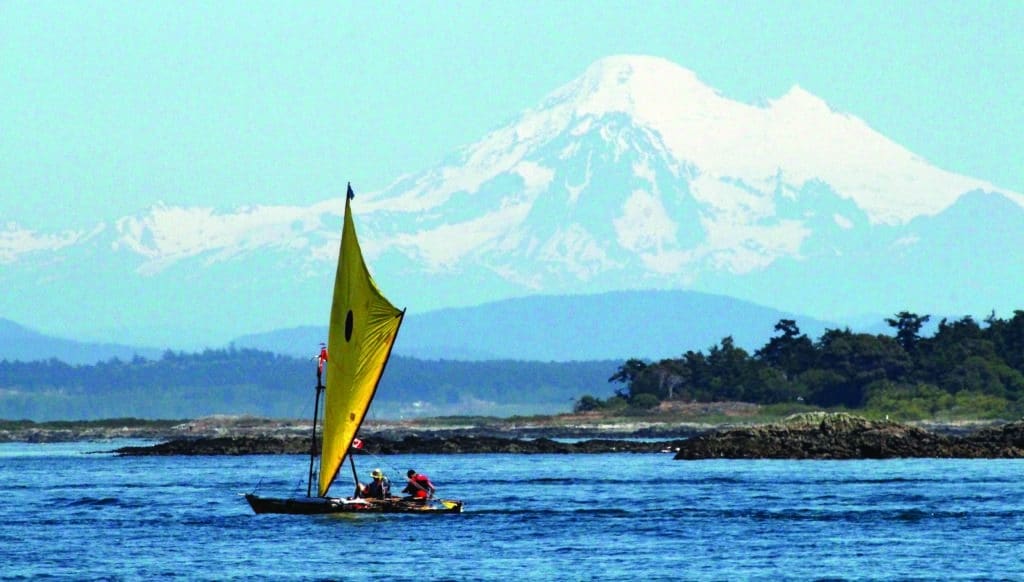
The inaugural Race to Alaska (R2AK) was a great big roll of the dice.
From conception, over a beer at the Port Townsend Wooden Boat Festival in 2013, until the race began on June 4, 2015, no one knew what to expect — that was a huge part of the appeal. The concept was simple: sail, paddle, pedal or row, with no support or motors, 750 miles from Port Townsend, Washington, to Ketchikan, Alaska. Cross the finish line first, win $10,000. Second place gets a set of steak knives. And, finally, if you asked the race committee a question that required them to call a lawyer, you’d be disqualified.
While the requirements were minimal — make two waypoints along the route, and carry a SPOT tracker and a VHF — the execution for the racers proved both exhausting and exhilarating. As anticipated, an innovative array of 55 craft showed up at the start.
Scott Veirs and teammate Thomas Nielsen, who competed in a home-built 17-foot Polynesian-rigged Wharram catamaran with pedal assist, appreciated the body heat generated by pedaling in the rain and wind, while also increasing the apparent wind to point higher. “Facilitated by the boat tracking on the website tracker.r2ak.com, it was not uncommon for locals to show up within 15 minutes of hitting a beach, bearing gifts and offers of help and local knowledge of currents and winds,” Veirs stated. “Seeing humpback and orca whales was amazing, too.”
Race organizers picked a June time frame to leverage long hours of daylight and unpredictable weather. Early in the race, unexpectedly strong and persistent headwinds favored sturdy productionbuilt multihulls, while knocking out many of those who were counting on performance in light air via human-powered craft. And yet, a sail-assisted outrigger canoe paddled by a six-man team did finish in seventh place. Despite heavy attrition, a feeling of man-against-the-sea camaraderie prevailed throughout the race.
Twenty-eight boats remained in the race after the qualifying leg from Port Townsend. Fifteen finished in Ketchikan before the sweep boat reached them on July 4, and, yes, there were fireworks that night! An F-25C trimaran handily won the cash after a five-day, one-stop sprint. An F-25SR trimaran and Hobie 33 battled for the steak knives —finishing within four minutes of each other.
By all accounts, race organizers at the Northwest Maritime Center in Port Townsend met their goal: to “create a conversation about engineless voyaging and connect mariners to the sea in an adventurous way that doesn’t require a huge budget” — similar to voyagers Lin and Larry Pardey’s adage, “Go small, go simple, go now.” Scott Veirs, whose boat cost $2,000 in materials, felt that “collectively we learned that many small boats can be effectively moved without an engine, even where tides rule.”
Maritime Center executive director Jake Beattie was “blown away” by the enthusiasm and worldwide interest in R2AK, which was due in part to the entertaining website R2AK.com, the race blog and social media posts.
The R2AK isn’t for everyone and even the best sailors can meet their match on the way to Alaska. The race is so tough in fact, that the race organizers have called out Larry Ellison himself, offering up a set of the coveted R2AK steak knives if any boat that has sailed an America’s Cup can even finish the race – Check out the video below for their callout.
Do you think you have what it takes? The next installment starts in June of 2016, so get prepping!








